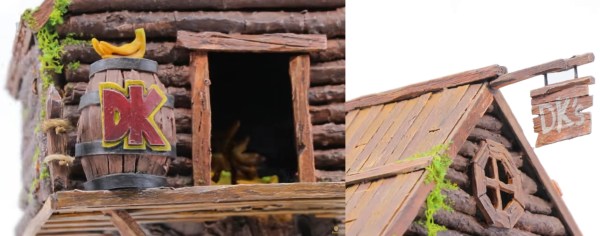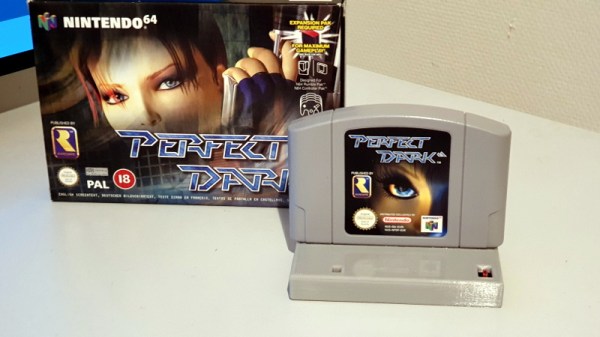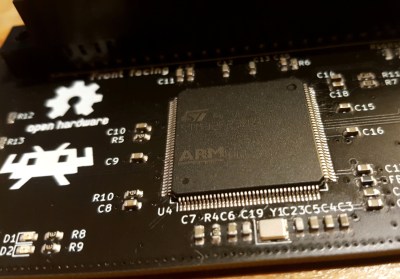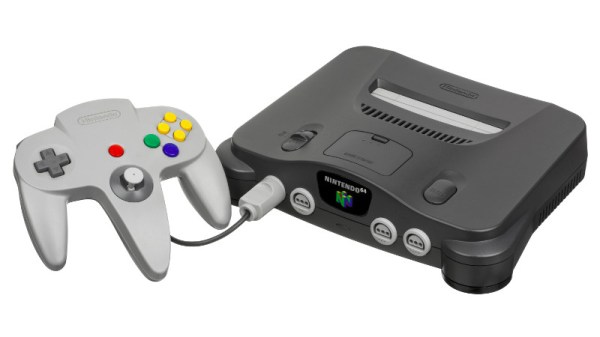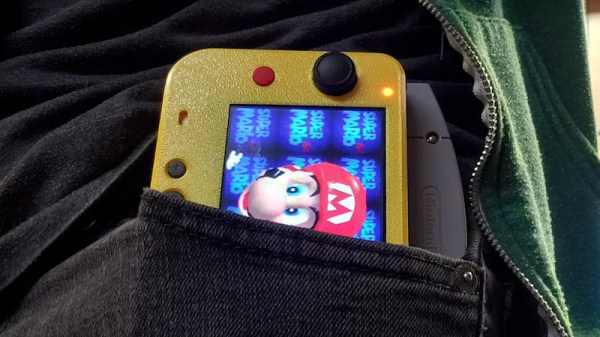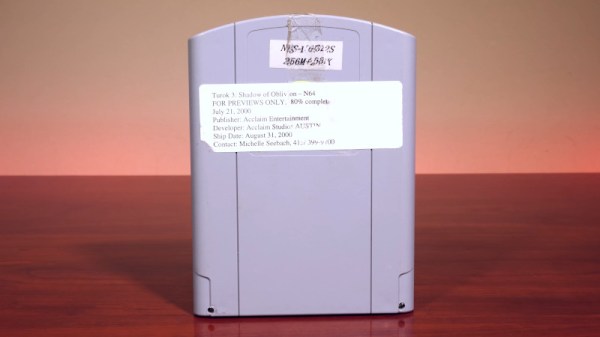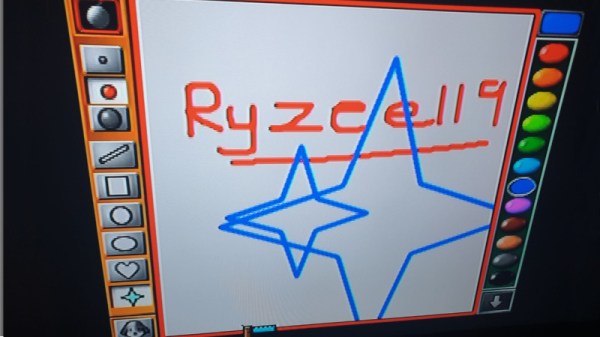If you want to see a glorious combination of model bananas in a treehouse mixed with a lot of tongue-in-cheek humor, you will appreciate [Studson]’s build video. Video also after the break. He is making an homage to Donkey Kong 64 from 1999, which may be a long time ago for some folks’ memory (Expansion Pak). Grab a piece of your favorite banana-flavored fruit and sit tight for joke delivery as dry as his batch of baked bark.
The treehouse uses a mixture of found material and crafting supplies. In a colorful twist, all the brown bark-wielding sticks are green, while the decorative greenery came from a modeling store shelf. It all starts with a forked branch pruned from the backyard and a smooth-sided container lid that might make you look twice the next time you nuts are buying a bin of assorted kernels. If you thought coffee stirrers couldn’t be used outside their intended purpose, prepare to have your eyes opened, but remember to wear eye protection as some of the wood clippings look like they could achieve escape velocity. The key to making this look like an ape abode, and not a birdhouse, is the color choices and finishing techniques. Judging by the outcome and compared to the steps, making a model of this caliber is the sign of an expert.
If you wish to binge on wooden Donkey Kong, we can grant your desire, but if you prefer your treehouses life-sized, this may launch your imagination.

